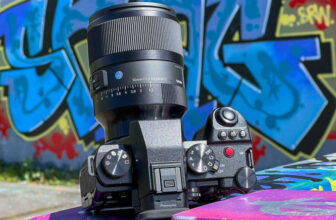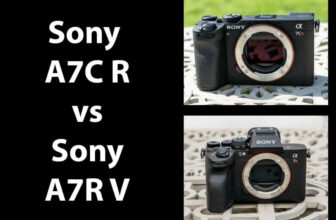
[adinserter block=”1″]
If you’re looking for a detailed analysis on Colorimeter vs Spectrophotometer for color management, this article is for you.
Here, you’ll learn what a colorimeter and a spectrophotometer are, how they work, and the differences between the two.
Colors are everywhere around us, and they’re an important part of our day-to-day lives; however, when it comes to color perception, there are variations in how each person perceives them.
At the same time, there is a lack of universal, accurate descriptors for colors.
For example, the term “orange” could mean a variety of colors for different people.
That’s where color measurement instruments like spectrophotometers and colorimeters come into play. They allow you to overcome the limits of perception and subjective descriptions.
Even though there are various applications where colorimetry is crucial, in this article, we’ll look at the use of spectrophotometers and colorimeters in the field of photography and art.
Let’s dive in!
What Is a Colorimeter?
Credit: Komarov Egor
A colorimeter is a color measurement device that works by evaluating the intensity and hue of light coming off a surface or screen.
Colorimeters closely mimic the human eye’s perception of color as they read the light within the visible spectrum of 400nm to 700nm.
The output from a colorimeter is a tristimulus value consisting of X, Y, and Z, or L, a, and b, where each represents different dimensions of the color’s visual appearance.
A display colorimeter is also called a calibrator, puck, or probe. It measures patches of color on the screen and outputs the ideal settings to make the display color accurate according to the selected color scheme.
These small devices capture precise color information that is often not visible to our eyes.
The file that contains these adjustments is called a profile and is usually saved in ICC format.
These ICC color profiles are custom for the individual display, and using them with another monitor would result in sub-optimal results.
When you load the generated ICC profile on a computer, you’re essentially telling it how to see the colors and render them on screen.
As displays – like other electronic equipment – deteriorate over time, a colorimeter is an essential tool to maintain the color accuracy of your monitor.
A colorimeter typically consists of three parts: an illuminant, an observer, and a tristimulus absorption filter.
The illuminant is a fixed component that emits a consistent light with a specific temperature, like daylight or incandescent.
On the other hand, an observer represents the human perception of light and color.
The tristimulus absorption filter captures the information in X, Y, and Z values and outputs the RGB in applications like screen calibration.
How Much Do You REALLY Know About Photography?! 🤔
Test your photography knowledge with this quick quiz!
See how much you really know about photography…

Now that we’ve understood what a colorimeter is, let’s see how it works.
Display colorimeters can be used on all displays; however, the device or software you’re using should support loading a custom ICC profile for you to benefit from its readings.
Designers, photographers, game developers, printers, and video editors use display colorimeters because color accuracy is essential in these fields.
They are also used in the industrial production of electronic devices such as TVs, tablets, smartphones, monitors, projectors, and more.
How Does a Colorimeter Work?
Colorimeters are used in a variety of industries to measure color and achieve an accurate profile.
However, in this section, we’ll discuss colorimeters in the context of display calibration.
Regardless of whether you’re working on a calibrated or uncalibrated display, your eyes adapt to how colors appear on it.
That’s why it’s hard to point out inaccuracies in color just by looking at a screen.
For this reason, you need a display colorimeter (also called a calibrator) to get a color-accurate profile for your monitor.
This is especially important when you’re editing photos for print. How your display renders colors would dictate how you perceive and edit it and, eventually, the final look of your photo on paper.

Credit: Mika Baumeister
Color calibration using a display colorimeter requires both software and hardware to function properly.
The hardware is the device itself, and the software is the utility that the manufacturer provides.
You start by connecting the device to your computer via the USB cable and then placing it on the center of the display while you’re in the calibration mode of the software utility.
The software allows you to get the correct luminance levels, and flashes more than 100 colors onto the screen to support measuring the accuracy across a broad spectrum of colors.
Behind the scenes, the device uses a fine-tuned sensor that can read and capture a variety of color information.
The wavelengths of the light coming off the display hit the sensor and pass through tristimulus filters of red, green, and blue.
The filters concentrate the RGB values for each color, and the sensor records the reflectance levels of the colors.
Once this part is done, the software utility then reads the color information captured and creates a custom color profile that provides the most accurate colors for your monitor at this point in time.
You can use the profile in software like Adobe Photoshop or Lightroom or can even load it within your operating system to apply it across the board.
Both Windows and Mac support adding a custom ICC profile.
Some of the advanced colorimeters can also measure ambient lighting, which often alters how we perceive colors on a screen.
Though colorimeters are ideal when you want to get color accuracy without much hassle, they have certain limitations as well.
Most colorimeters can’t detect metamerism, a phenomenon that occurs when two colors look exactly the same under a specific lighting condition but are different colors in normal lighting.
For applications where metamerism is likely to be an issue, a spectrophotometer offers a better way to measure colors.
What Is a Spectrophotometer?
A spectrophotometer is a color measurement device that is used in a variety of color management tasks across various industries.
It can simultaneously measure multiple light frequencies throughout the spectrum, which goes beyond the visible range of 400nm to 700nm.
With a spectrophotometer, you can measure the light reflecting off of a surface like paper or a wall and also from light-emitting surfaces such as a monitor panel.
The versatility of this device makes it useful for calibrating monitors, measuring the color accuracy of a print, or examining colors on fabric.
Not only can you create a profile to calibrate your monitor, but you can also do the same to get accurate colors out of your photo printer.
Similar to a colorimeter, the generated ICC profile can be loaded within photo or video editing software such as Adobe Photoshop, Lightroom, Premiere Pro, and more.
You can also use the profile overall by implementing it within your operating system, such as Windows or MacOS.
As spectrophotometers are capable of reading light from a large number of bands, they are more accurate compared to colorimeters.
Another advantage of these color measurement instruments is their ability to detect and account for metamerism, a condition where two different colors look the same under a specific type of lighting.
However, the capability to detect more frequencies of light also comes with a limitation; it adds unnecessary noise to the recorded data.
This happens mostly when you’re trying to capture color information from shadow areas or black patches on a screen.
As displays are backlit, it affects how the sensor on the spectrophotometer captures the brightness of the black color. Here, digital noise also comes into play and disrupts the final reading, resulting in skewed data.

Credit: Juliana Malta
For the above reason, it’s fairly challenging to get accurate shadow details with spectrophotometers. However, newer models are designed to overcome this limitation to some extent.
There are many types of spectrophotometers available in the market suited to a variety of applications.
Portable spectrophotometers are handy and easy to operate.
These lightweight devices are ideal for display calibration and color management.
On the other hand, benchtop spectrophotometers are larger in size; however, they offer the highest color accuracy.
Even though benchtop models are not ideal for screen calibration, they are useful in industries where quality control and color formation are crucial, such as automotive, garment manufacturing, paints and coatings, food and beverage, etc.
Spectrophotometer vs Spectrometer
Often, we get confused between a spectrophotometer and a spectrometer. Let’s take a brief look at how they’re different.
A spectrometer is used inside a spectrophotometer along with other components to facilitate color measurement of light.
Its function is to measure the wavelengths of light that have interacted with the surface or object you’re reading.
However, a spectrometer can also be a standalone device that is used in spectroscopy.
As we’ve understood the basics, let’s take a closer look at the workings of a spectrophotometer.
How Does a Spectrophotometer Work?
When it comes to color management, spectrophotometers are the most accurate and versatile device you can get your hands on.
Every surface reflects some amount of light or absorbs light to some degree; this is called reflectance and transmittance, respectively.
A color spectrophotometer evaluates the light reflected or passed through materials to represent color under specific light conditions.
It distinguishes colors by recording their reflectance at different levels across the visible spectrum, with white reflecting nearly all light and black absorbing it, depicted by their respective flat reflectance curves.

Credit: Tim Mossholder
Newer advanced models come with cameras for accurate targeting and touchscreens for ease, while others can assess fluorescence or spectral reflectance for various applications, enhancing precision in color measurement tasks.
There are three main types of spectrophotometers catering to a variety of applications across multiple industries: 0º:45º (or 45º:0º), sphere, and multi-angle spectrophotometer.
You can find all three types in portable form; the most common is a portable 45º:0º spectrophotometer, which measures light reflected off at a fixed angle and can eliminate glare from the equation to closely mimic how the human eye sees color.
It’s great for taking color readings from both glossy and matte surfaces, meaning both printers and monitors can be profiled with it.
The other two, sphere and multi-angle spectrophotometers, are best suited for other applications but not so much for display calibration.
What Are the Main Differences Between a Colorimeter and a Spectrophotometer?
As a creative professional, you might wonder what the difference is between a colorimeter and a spectrophotometer and which one is the right color measurement device for you.
Let’s dive into the main differences between these color measurement devices so that you can choose a device suitable for your needs.
Accuracy: One of the key differences between these devices is the wavelength of light they operate in.
Colorimeters work within the visible range of 400nm to 700nm, whereas spectrophotometers go far beyond on both ends.
Spectrophotometers offer better color accuracy by analyzing the full spectrum of light, making them ideal for precise color matching.
However, colorimeters provide good color accuracy for display calibration but can’t match the spectral analysis precision of spectrophotometers.
Luminance Measurements:
Another difference is in the build of both devices, where spectrophotometers are equipped with spectrometers that help measure luminance indirectly through spectral data.
On the other hand, colorimeters are designed to measure luminance directly, making them more straightforward for the specific task of measuring screen colors.
Wide color gamut support:
Spectrophotometers are better for analyzing materials with wide color gamut due to their comprehensive spectral analysis.
They produce accurate color representation and often don’t suffer the inability to detect metamerism.
Colorimeters, while effective within standard color spaces, may not fully capture a color gamut that is too wide.
Cost:
Spectrophotometers are typically more expensive due to their advanced technology and detailed analysis capabilities.
They’re also useful for a variety of things, including color profiling for printers and more.
Colorimeters are more affordable, offering a cost-effective solution for display color measurement applications.
Speed:
Colorimeters are generally faster in performing measurements as the amount of data recorded is limited, which also allows faster processing within the software utility.
Due to their detailed analysis, spectrophotometers, on the other hand, are slower in capturing light information and processing it.
That being said, the time difference is marginal between the two and should not be the reason to choose one over another.
Colorimeter vs. Spectrophotometer: Which Is Better for Monitor Calibration?

Credit: Joshua Fuller
Whether you’re a professional photographer, videographer, or designer, color accuracy can be a crucial element for your workflow.
That’s why you must calibrate your monitor from time to time to get the right colors in your projects.
When it comes to display calibration devices, there are a ton of options in the market, ranging from entry-level colorimeters to advanced spectrophotometers.
However, with so many options, it’s easy to get confused about the right device for your needs.
The fact is both colorimeters and spectrophotometers are designed for specific color calibration needs.
Budget also plays a key role in your choice of device for display calibration.
Colorimeters are more suitable if you’re starting out with color calibration and advanced processing. That’s because they come at a comparatively cheaper price tag and simpler functionality.
A colorimeter model like Calibrite Display Pro HL would be a great choice for beginners as it comes with a high-precision sensor and is an overall fast device.
What makes spectrophotometer a better choice is its high accuracy and versatility of applications.
You can use a spectrophotometer to profile and calibrate your printer and even read the accuracy of colors off a paper or a fabric.
One of the best spectrophotometer models currently on the market is the Calibrite ColorChecker Studio, which can help you calibrate your displays, projectors, scanners, and printers.
Overall, the choice of a calibration device depends on your budget and calibration requirements.
If you want to calibrate your monitor on a budget and don’t require highly accurate readings, you would benefit from investing in a colorimeter.
On the other hand, if you make your own prints or color accuracy is absolutely important to you, a spectrophotometer would suit your needs well.
FAQ
Can we use a colorimeter instead of a spectrophotometer?
Yes, for applications requiring direct luminance measurements, such as display calibration, and where high-speed, general color accuracy is sufficient, a colorimeter is a great choice.
What is a colorimeter used for?
Colorimeters are primarily used for monitor calibration, color matching in manufacturing, and quality control processes where fast and reasonably accurate color assessments are needed.
[adinserter block=”1″]
Credit : Source Post






